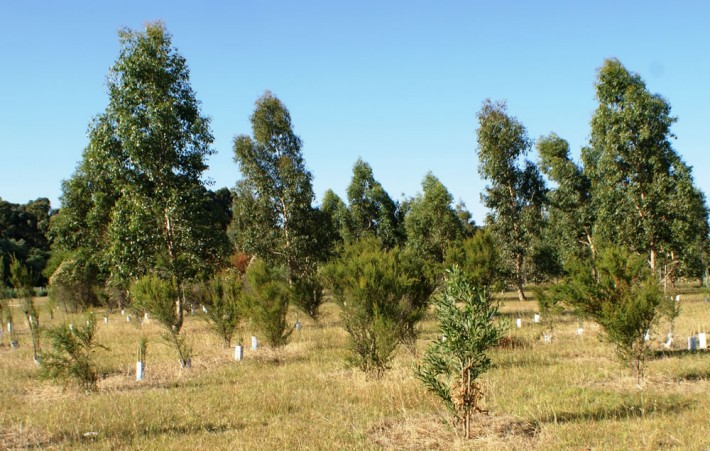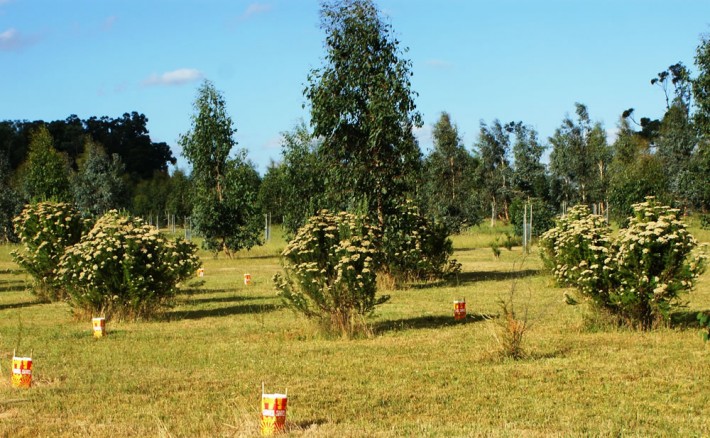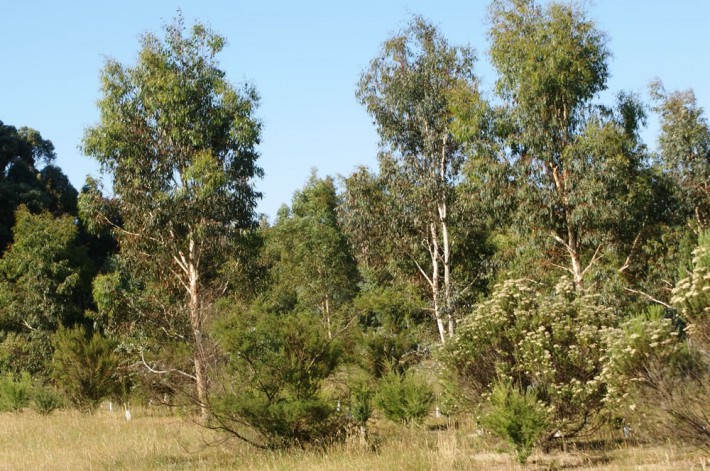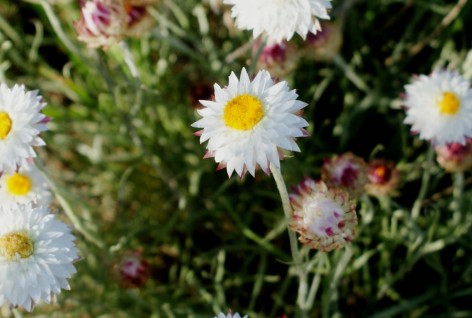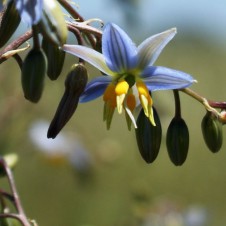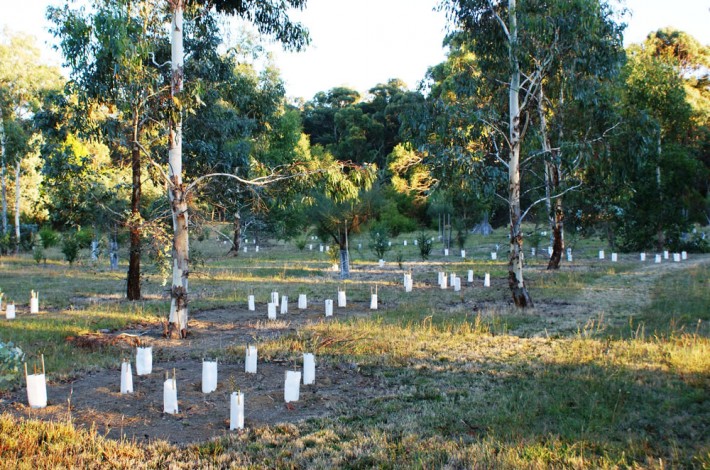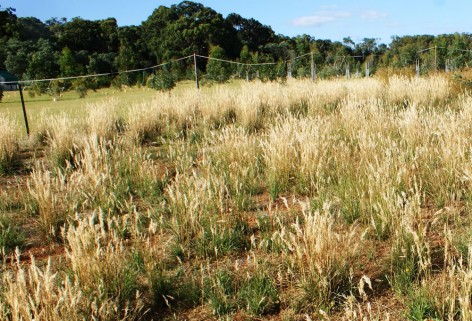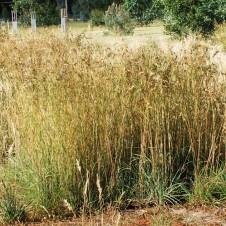Click images to view larger
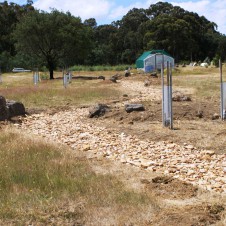
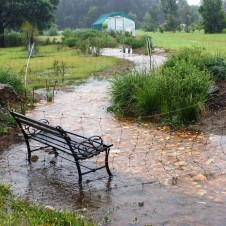
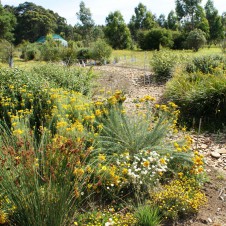
This website has been set up by Libby and Steve to sell the seed collected at their Seed Production Area (SPA) near Daylesford, northwest of Melbourne.
Who are we?
Libby has a background in native grasslands, property management, landcare, seed collection and seedbanks. Steve was a secondary school teacher and has now had over 20 years experience in landscaping, gardening and horticulture.
Libby’s qualifications include a Bachelor of Biological Science Degree with a major in Botany and Zoology and she has 30 years experience in diverse Natural Resource Management fields. This includes 8 years as a Stewardship Officer for Trust for Nature, working for DSE as a Native Grassland Project Officer, Catchment Management Officer with DPI, 5 years working in Landcare, 5 years as manager of the Portland Seedbank for Greening Australia and 3 years working for Seeding Victoria.
Steve has a Bachelor of Arts with honours and is knowledgeable in history and geography. Steve has also now had over 20 years experience in working on the land doing such things as weed control, planning plantings, constructing and maintaining infrastructure and digging most of the thousands and thousands of holes required for planting.
The Seed Production Area (SPA)
The beginning
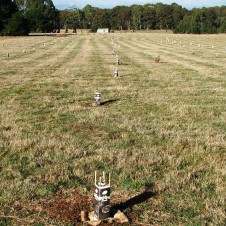
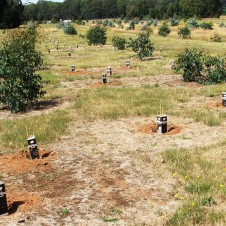
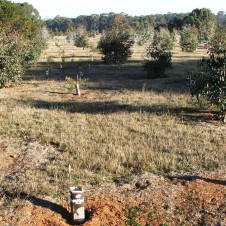
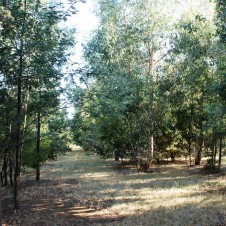
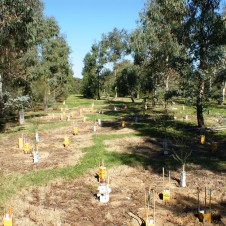
In 2005 we had the opportunity to purchase a 5 hectare paddock from a neighbour and decided to use it to establish a Seed Production Area (SPA) of native plants. This paddock consisted of only non-native grass and adjoined remnant vegetation on two sides.
We started our project by studying local demand for seed from nurseries and seedbanks. Many species are difficult to collect in the wild due such things as sequential ripening, low fruit set, prostrate habit and non-persistent fruit that open without warning in hot dry weather. Over time we hope to make these species more available.
There are other reasons why it can be difficult to get good quantities of seed for example Candlebark can be extremely difficult to tell apart from Manna Gum and also they are often very tall making seed very difficult to reach.
We collected seed from a number of small, isolated populations and seed from larger more diverse populations and planted plants from this seed together. Their combined genetics will now provide a more viable seed source.
We also looked at which species would add the most to our revegetation area and to local flora and fauna. The planted area adjoins a large area of high quality remnant bush so genetics for many plants will be shared between the remnant and revegetation areas. This will also increase insect and bird pollination in the SPA.
We wish to reduce general seed collection in remnants because this can impact on natural populations by decreasing the seed in the soil seed bank and limiting the capacity for natural regeneration. It can also reduce the flowering potential of plants through foliage removal, which in turn can affect future seed supply. Seed collection can also reduce the food available for native fauna, and it can decrease the health of plants.
As well as focusing on difficult to collect or fragmented species that require conservation we also want to increase supplies of seed for key ‘structural’ species used in revegetation activities. We want to try to supply seed from a wide range of species that may be needed for restoration of specific plant communities.
We propagated all initial plants ourselves but then sold seed to two nurseries and bought the plants for many smaller species. We also collected cuttings and one of the nurseries grew these for us.
Planting
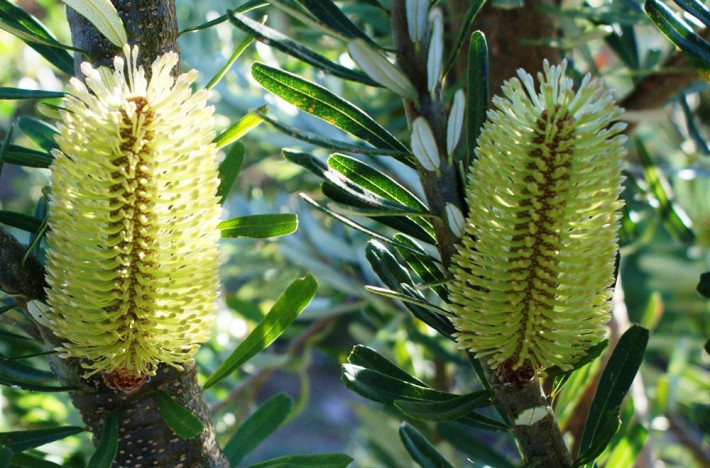
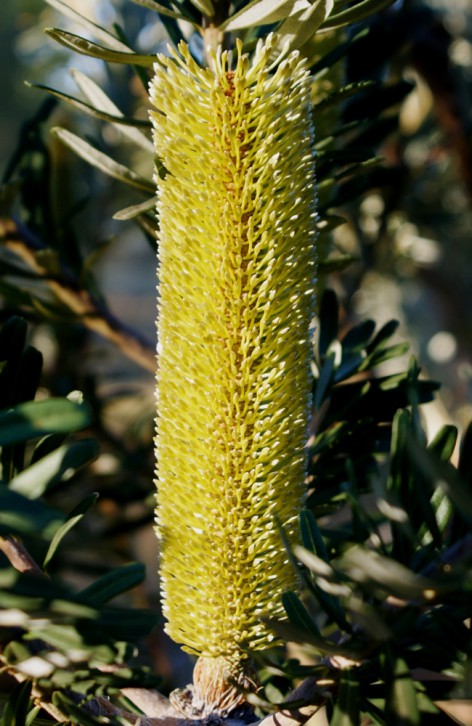
We started the SPA by planting trees and then shrubs and lastly groundflora and grasses. Planting has been done to maximise the chances of random cross pollination, creating higher genetic diversity and improved yields. For a strong genetic base we are aiming for a minimum of 100 plants for each species. In some cases the plants in the SPA will share genetics with the adjoining high quality bush so it is not always necessary to plant 100 plants. Survival of the plants is monitored and more plants are added every year to maximise genetic quality.
We have noticed a good diversity in characteristics in many of the species in our SPA for example our Silver Banksia flowers which range from short to long and wide to thin which demonstrates the range in the genetics.
The Trees
We wanted to plant at least 50 of each of the tree species so we chose four local Eucalypt species to plant. We knew we could get enough Messmate, Manna Gum and Narrow-leaved peppermint seed from the edges of our existing remnant bush. We chose to plant Yarra Gum (74 plants survived), Candlebark (78), Swamp Gum (89) and Yellow Box (57) as Candlebark and Swamp Gum are found on our property and the other two are found nearby and Yarra Gum is listed as rare. All four of these species are generally found in lower quantities at seedbanks and are more sought after by nurseries.
We started by spraying spots, with glyphosate, in lines where the plants would be planted and then we planted the tree species in four blocks of planting so we would not get them mixed up. We were careful to separate the blocks of Yarra Gum and Swamp Gum by the block of Candlebark as they have very similar fruit. We did not plant the Candlebark near any Manna Gum as they are known to hybridise.
Next we planted the smaller trees like Silver Banksia (tree form) (311) and Drooping She-oak (208). Both these species have disappeared from many areas and are often not included in revegetation projects because of a lack of seed. We also planted Blackwood (106) as we wanted to include this lovely long-lived Wattle.
Our SPA is set up so our Ute can travel between the plants and if necessary we will be able to cut branches to facilitate seed collection.
The Shrubs
Next we planted many shrub species and once again we specialised in the under-represented species that often grew in the areas that have now been cleared because the soil is more fertile or the vegetation more open. We planted Sweet Bursaria (213 plants survived), Prickly Moses (167), Bushy Needlewood (95), Tree Violet (228) and Prickly Tea-tree (148). We also planted Common Cassinia, which as the name suggests is more common, because it is a good colonising species and the insects and birds like them.
Lastly we planted the groundflora such as Thin-leaved Wattle (133), Narrow-leaf Bitter-pea (176), Black-anther Flax-lily (110), Matted flax-lily (277), Grey Parrot-pea (85), Matted Bossiaea (53), Purple Coral Pea (107), Austral Indigo (175), Wattle Mat-rush (80), Spiny-headed Mat-rush (400), Moth Daisy-bush (80), Silky Daisy-bush (51), Large-leaf Bush-pea (52), Bluebell (100) and native grasses.
Establishment
In most years we have planted 1,000 to 2,000 plants in both spring and autumn.
All these plantings (apart from the Eucalypts) were done by mixing up groups of the same species with other groups of different species. This is to give a natural look to the planting while still making the seed collection easier because the same species are in groups together. Because this SPA covers such a large area it is not necessary to access all sides of all plants.
Some groups of prickly plants are deliberately planted close together as these provide excellent nesting sites for native birds many of which have already nested in our SPA. Other plants, such as the Austral Indigo also like to be planted in groups as they can be a bit spindly and the plants support each other when planted in a group.
The creation of a creek
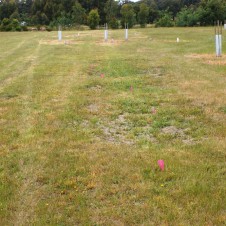
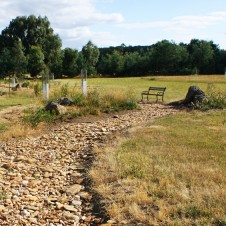
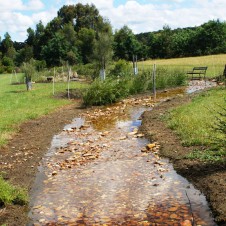
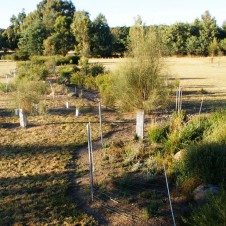
We needed to drain water from around our house and so decided to create a drain that becomes an ephemeral creek when it reaches the SPA. This creek flows though the lowest part of the SPA and finishes in an existing dam in the far corner of the SPA. This allowed us to add riparian species to the SPA and to create raised areas where we could plant dense groupings of small plants such as daisies and lilies.
Along the newly created creek, and near the dam, we planted River Bottlebrush (279 plants survived) and River Tea-tree (202), Australian Buttercup (100), Lomandra and Dianella. On the raised areas we planted over 100 Pale Vanilla-lily and Chocolate Lily as well as Blue Pincushions, Bulbine Lily, Milkmaids, Clustered Everlasting, Mountain Clematis, Variable Billy-buttons, Button Everlasting, Wiry Buttons, Red Weeping Grass, Yam Daisy, Grass Triggerplant and Bluebell.
Rare and endangered species
Libby works in privately owned native grasslands, so to aid that work we established large numbers of some threatened and rare grassland plants, these include Pussy Tails, Swamp Billy-buttons, Matted Flax-lily and Hoary Sunrays.
Seed from two of these populations have been used in a Trust for Nature project. So far 650 Matted Flax-lily and 600 Hoary Sunray (both [E] Endangered in Australia and [e] Endangered in Victoria and listed as ‘Endangered’ under the Commonwealth Environment Protection and Biodiversity Protection Act (1999)) have been planted on 15 properties with conservation covenants.
Many plants were also established from cuttings and included in the SPA to add diversity even though these species do not produce enough seed to collect from. This includes 5 species of Grevillea 4 of which are listed as rare in Victoria.
Today
We now have 83 species in the SPA and have identified 128 native species in our adjoining bush. We collect seed from 82 species and have 10 threatened species growing on the property.
Every few years we count (inventory) all surviving plants in the SPA and then we add more plants of the less represented species. There are varied soil types in the SPA area and bush so we are able to plant a range of species which have different requirements.
Our SPA is now producing good quantities of seed. We are particularly excited about the 311 Silver Banksias (tree form) most of which now produce reliable quantities of seed every year. This species is described in the historical record as being found in most areas of Victoria but is not included in many EVC lists as so few populations survived the introduction of white people and rabbits. We want to provide seed and encourage more landholders to include this species in their projects as it flowers in summer and autumn and into winter, this will help many threatened bird and animal species. A recent ‘state of Australian birds’ publication by Birds Australia said that the disproportional clearance of better quality land has meant that there are now less nectar resources for honeyeaters and insects during summer and autumn.
Ongoing maintenance of the Seed Production Area
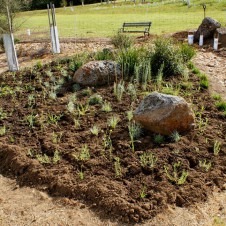
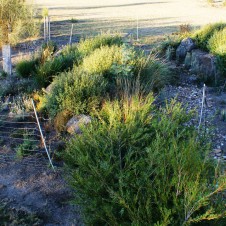
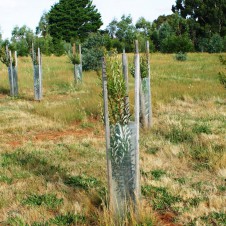
The SPA requires constant maintenance, most plants have to be sprayed around with glyphosate every year or otherwise they would disappear in the long weed grasses. This will be required less over time as leaf litter builds up under the plants and as competition for water reduces the cover of the weed grasses. In some areas we have established native grasses but this a very difficult and challenging process.
The whole property has been fenced with rabbit proof fencing and this is regularly checked and maintained, as a result rabbits are not a problem in the SPA. Kangaroos are a constant challenge in the SPA but fortunately, so far, the small Wallaby population chooses to stay in the bush.
Kangaroos tend to single out certain species for damage either because they find them palatable or because they regularly damage them as part of their territorial behavior. In particular we have had to provide additional protection for Silver Banksia, Drooping She-oak and Flax-lilies.
When they were small four strong bamboo stakes and a milk carton guard was mostly enough but once they grew higher more protection for the taller plants was needed. We purchased a roll of plastic tree guards and asked that they only have perforations every 60 cm instead of every 30cm. We then used these with three 1.8 m extra wide tomato stakes and this provided sufficient protection for almost all plants to establish.
Longer term guarding often has negative side-effects but plants were completely killed without it. These double plastic guards caused some rubbing on plants and some insect/slug damage as they provide homes for these pests. Over time this damage has mostly been repaired by the plants. We protect larger areas of small plants from Kangaroos by using portable electric netting fences (not electrified). If the protected areas are not too big or wide the kangaroos do not like to jump into them.
Some species such as Silver Wattle have introduced themselves into the SPA and in most cases we are happy for this to happen. If they come up too thickly we cut and paint with glyphosate. This involves cutting off the foliage structure of the unwanted plant from low on its central trunk and then quickly applying glyphosateto the cut surface of the stump (Round-up is an example). It is extremely important to apply the herbicide as quickly as possible (within 10 seconds), as the plant’s internal transport system breaks down on exposure to air and this will decrease the uptake of herbicide by the plant. This method should NOT be used if the plants being cut could be suckering from a nearby larger plant unless you want to kill the larger plant as well. Cut and paint method should also not be used near Cherry Ballarts as they get nutrients from nearby plants and can be killed unintentionally by this method of control.
Soil and Grassland areas
The site of the Seed Production Area (SPA) was also chosen because it has a range of soil types including red volcanic soils, black loamy soil and sandy soil over clay. This has given us the versatility to grow many species that are found around Melbourne and through much of Central Victoria. The red volcanic soil has been very helpful in the propagation of grassland species. The climate range of the SPA is very similar to that found in most of outer Melbourne and the central and southern part s of Victoria. It is bit warmer and drier than Daylesford, Trentham or Ballarat but not as hot or dry as Bendigo and Castlemaine.
Genetic diversity and birds
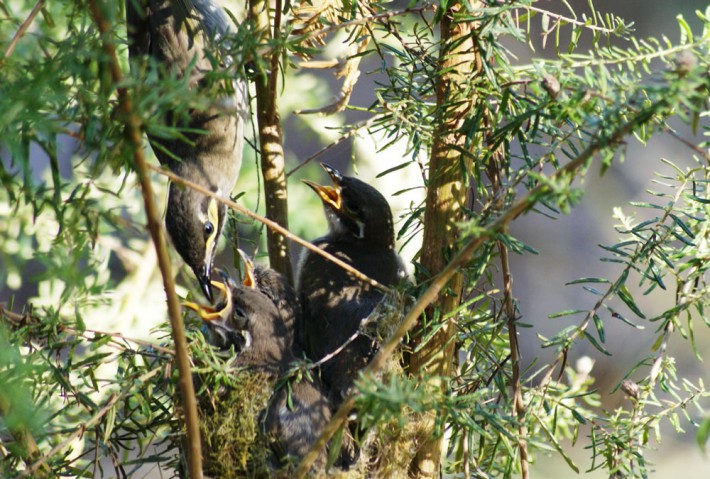
It is important to ‘refresh’ the SPA with new individuals every year to invigorate genetic quality of the seed and in order to not perpetuate a narrow genetic base in the seed supply chain. For this reason as we come across new populations in our area, we add these, and will continue to collect in order to increase the genetic diversity.
We have found that we have already increased the range of fauna that we see on our property because of our SPA. We are sure that we have at least doubled the number of family groups of Blue Wrens and many species of honeyeater are seen over many more months than was the case in the past. The Yellow-tailed Black Cockatoos used to only visit once or twice a year to feed on some pine trees on our fence line in a neighbor’s property. Now they stay for many months as they feed on the hundreds of Banksias and Hakeas, we have to separately bag Banksia cones in order to save enough for seed sales. It is worth the extra effort to have these beautiful majestic birds keeping us company for an extended period.
Seed storage
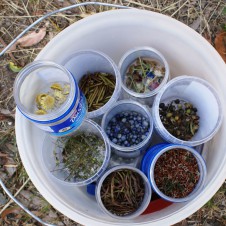
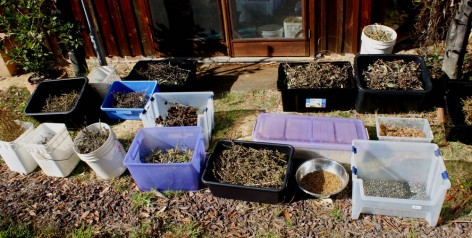
We store all our seed at a low temperature in a fridge used only for this purpose and we have a policy of not keeping seed for long periods of time. Our plan is to sell most seed each year and collect fresh seed every year. The exception to this is hard coated seeds such as wattle seed which last with high viability for many years.
We have collected seed on our property from over 80 species in total. This number will increase over time and if we have seed from smaller seeded species that has been stored for more than 2 or 3 years we will use this for our own direct seeding and will sell only relatively fresh seed (up to 2 or 3 years old) of species where viability reduces more quickly over time.
The following is a list of species from which we can collect seed, in both our SPA and the edges of our remnant bush:
| Scientific Name | Common Name | Provenance |
|---|---|---|
| Acacia aculeatissima | Thin-leaf Wattle | Denver |
| Acacia dealbata | Silver Wattle | Denver |
| Acacia melanoxylon | Blackwood | Denver |
| Acacia nano-dealbata | Dwarf Silver Wattle | Glenlyon, Little Hampton and Musk |
| Acacia paradoxa | Hedge Wattle | Denver |
| Acacia verticillata | Prickly Moses | Glenlyon |
| Acaena novae-zelandiae | Bidgee-widgee | Denver |
| Aceana echinata | Sheep’s Burr | Denver |
| Allocasuarina littoralis | Black She-oak | Spring Hill |
| Allocasuarina verticillata | Drooping She-oak | Glenlyon/Pastoria |
| Anthosachne scabra | Common Wheat-grass | Denver |
| Arthropodium milleflorum s.l. | Pale Vanilla-lily | Denver |
| Arthropodium strictum | Chocolate Lily | Denver |
| Austrostipa semibarbata | Spear Grass | Denver |
| Banksia marginata (tree form) | Silver Banksia | Baynton/Tooborac |
| Billardiera scandens | Common Apple-berry | Hepburn Springs/Newstead |
| Brunonia australis | Blue Pincushion | Denver |
| Bulbine bulbosa | Bulbine Lily | Denver |
| Burchardia umbellata | Milkmaids | Denver |
| Bursaria spinosa | Sweet Bursaria | Glenlyon |
| Callistemon sieberi | River Bottlebrush | Glenlyon |
| Carex appressa | Tall Sedge | Malmsbury |
| Cassinia aculeata | Common Cassinia | Denver |
| Chrysocephalum semipapposum | Clustered Everlasting | Gleniyon |
| Clematis aristata | Mountain Clematis | Denver |
| Coronidium scorpioides | Button Everlasting | Denver |
| Craspedia paludicola | Swamp Billy-buttons | Wallinduc |
| Craspedia variabilis | Variable Billy-buttons | Denver |
| Daviesia leptophylla | Narrow-leaf Bitter-pea | Denver |
| Daviesia ulicifolia | Gorse Bitter-pea | Spring Hill |
| Deyeuxia quadriseta | Reed Bent-grass | Denver |
| Dianella admixta | Black-anther Flax-lily | Denver |
| Dianella amoena | Matted Flax-lily | Denver |
| Dillwynia cinerascens | Grey Parrot-pea | Denver |
| Discaria pubescens | Australian Anchor Plant | Shepherds Flat |
| Eucalyptus melliodora | Yellow Box | Vaughan |
| Eucalyptus obliqua | Messmate Stringybark | Glenlyon/Denver |
| Eucalyptus ovata | Swamp Gum | Glenlyon/Denver |
| Eucalyptus radiata s.l. | Narrow-leaf Peppermint | Glenlyon/Denver |
| Eucalyptus rubida | Candlebark | Glenlyon/Denver |
| Eucalyptus viminalis | Manna Gum | Denver |
| Eucalyptus yarraensis | Yarra Gum | Wheatsheaf |
| Gompholobium huegelii | Common Wedge-pea | Denver |
| Hakea decurrens | Bushy Needlewood | Glenlyon |
| Hardenbergia violacea | Purple Coral Pea | Denver |
| Indigofera australis | Austral Indigo | Denver |
| Leptorhynchos squamatus | Scaly Buttons | Denver |
| Leptorhynchos tenuifolius | Wiry Buttons | Denver |
| Leptospermum continentale | Prickly Tea-tree | Glenlyon |
| Leptospermum obovatum | River Tea-tree | Glenlyon |
| Leucochrysum albicans NOT var. tricolor PLEASE NOTE | Hoary Sunray | Euroa |
| Lomandra filiformis | Wattle Mat-rush | Denver |
| Lomandra longifolia | Spiny-headed Mat-rush | Denver |
| Melicytus dentatus | Tree Violet (cleaned) | Glenlyon |
| Microlaena stipoides | Weeping Grass (green) | Murrumvateman NSW |
| Microseris walteri Only Available Autumn | Yam Daisy | Earlston |
| Olearia erubescens | Moth Daisy-bush | Denver |
| Olearia myrsinoides | Silky Daisy-bush | Denver |
| Ozothamnus obcordatus | Grey Everlasting | Denver |
| Pentapogon quadrifidus | Five-awned Spear-grass | Denver |
| Pimelea humilis | Common Rice-flower | Denver |
| Poa sieberiana | Grey Tussock-grass | Denver |
| Podolobium procumbens | Trailing Shaggy-pea | Lauriston |
| Ptilotus spathulatus f. spathulatus | Pussy Tails | Meredith |
| Pultenaea daphnoides | Large-leaf Bush-pea | Hepburn Springs/Fryerstown |
| Ranunculus lappaceus | Australian Buttercup | Denver |
| Rytidosperma geniculatum | Kneed Wallaby-grass | White Hills |
| Rytidosperma pallidum | Silvertop Wallaby-grass | Denver |
| Rytidosperma setaceum and other species | Wallaby-grass mix | Earlston |
| Rytidosperma tenuius | Purplish Wallaby-grass | Denver |
| Stylidium graminifolium s.l. | Grass Triggerplant | Denver |
| Themeda triandra | Kangaroo Grass | Earlston |
| Xerochrysum viscosum | Shiny Everlasting | Denver |

